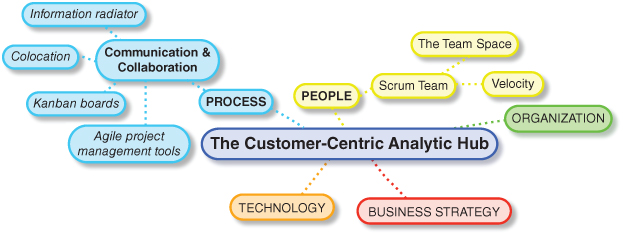Chapter 16Collaboration and Communication
Agile teams set up their environment for success. The team's physical and virtual space provides a critical area for the team to effectively communicate, collaborate, and share information between the team and customers. But there's no one right way to configure a space, and working with your team members to find out what works best for them in your operational environment is important (see Figure 16.1).

Figure 16.1 Collaboration and Communication Considerations
The Team Space
As a follow-on to The Agile Manifesto, the authors defined 12 supporting principles behind the Manifesto. One of the principles states: “The most efficient and effective method of conveying information to and within a development team is face-to-face conversation” (Beck, Beedle, Bennekum, et al., 2001). Agile promotes high-bandwidth communications—that is, the environment supports the exchange of information quickly and efficiently across the project team. This results in an increase in both the frequency and quality of information shared.
The team's environment needs to support collaboration. A common setup for a project team might be in a dedicated “war” room: Agile teams often have a dedicated open room that the team works in. Desks or tables are configured to be collaboration-friendly with minimal barriers (such as walls or dividers) to facilitate interaction ...
Get Agile by Design now with the O’Reilly learning platform.
O’Reilly members experience books, live events, courses curated by job role, and more from O’Reilly and nearly 200 top publishers.

